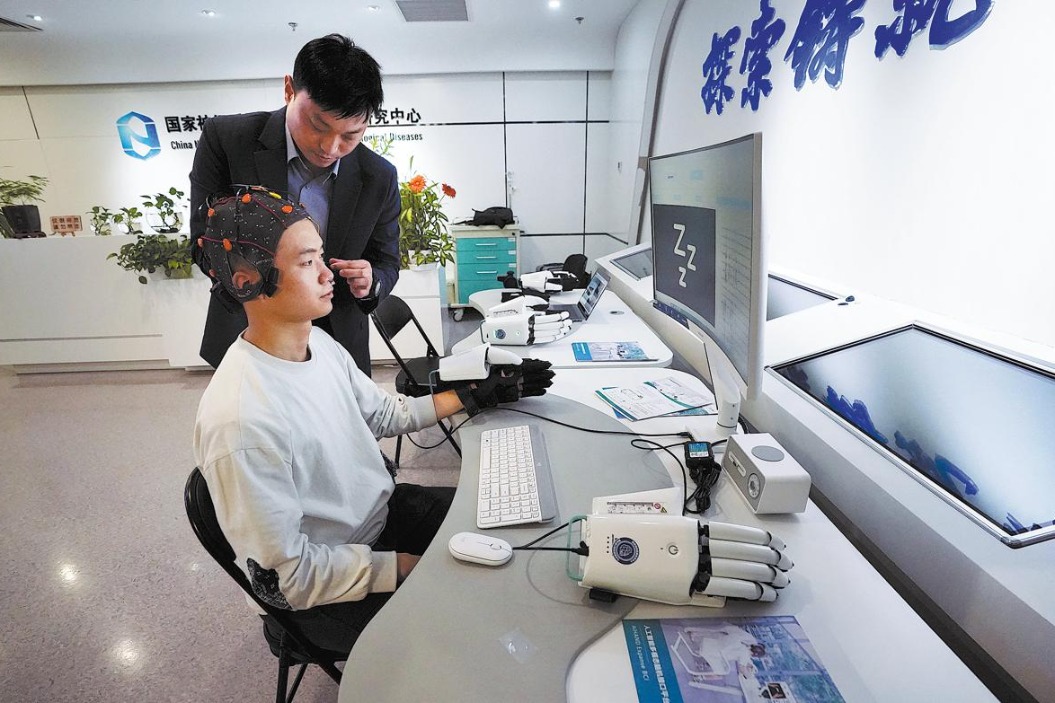Virus highlights need for digital connectivity


One of the key long-term impacts of the novel coronavirus pandemic may be a profound change in how people work, learn and interact.
Over the last few decades, our jobs, our schools and our social lives have become progressively more digitalized-but the pandemic will dramatically accelerate that trend. The forced "lockdowns" experienced in almost all countries will, inevitably, change public perceptions about how we should live after the pandemic is contained. One of those changes is likely to be a widespread realization that many routine activities which we previously did face-to-face-such as work meetings and shopping-can be more easily and effectively done online.
But the world will only be able to take full advantage of the benefits of increased digital connectivity if and when every person, in every country, can access that technology.
Physical networks to digital networks
In an interview with the British Broadcasting Corporation at the beginning of April, Edmund King, president of the United Kingdom Automobile Association, said the pandemic will lead to a permanent reduction in the demand for road travel and the greater use of digital communication. According to King, "Arguably in the future, we should invest more in broadband because what this crisis has shown is that the majority of companies can continue working from home, and it can be more efficient".
Other commentators have made the same point. In a recent article in Forbes magazine, Rahul Razdan, senior director, special projects, Florida Polytechnic University, noted that, "The concept of social distancing is forcibly driving significant change in very fundamental ways in many key areas of our lives. The places for disruption include education, work, shopping, health care, and entertainment. If this same event would have occurred 20 years ago, there would have been no alternative to the baseline physical interaction model. Today, each of these activities has a digital twin which offers a viable alternative".
Unfortunately, a significant part of the world's population does not yet have access to digital technology. Even where access is available, it is often of poor quality, or unaffordable to large numbers of potential users.
The Inclusive Internet Index 2020, published by the Economist Intelligence Unit, is a study that focuses on a key aspect of digital technology-namely the ability to access the internet. It found that only 9.9 percent of households in low-income countries have internet access, compared with 88.5 percent in rich countries. However, even some advanced economies have struggled to provide high-quality broadband service, especially in rural areas.
Another major issue is the need for training in basic digital skills. In its latest report on the State of Mobile Internet Conductivity, the GSM Association, a worldwide organization of mobile network operators, found that a "lack of literacy and digital skills is the top reason preventing consumers in LMICs (low and middle-income countries) from using mobile internet".
Global cooperation can close the digital divide
At an emergency meeting of the United Nations Broadband Commission held, digitally, on April 3, Zhao Houlin, secretary-general of the International Telecommunications Union, stated that, "As the COVID-19 pandemic accelerates, making in-roads in the developing world and threatening all of humanity, we need to take immediate action to ensure no one is left behind.
This unprecedented crisis shows that nobody is safe until we are all safe. It also shows, with no ambiguity, that we will not unleash the full potential of broadband until we are all connected".
There are some encouraging examples, though, of countries and international organizations working together to close the "digital divide"-the gap between those populations which have digital connectivity and those which do not.
One such initiative, led by the African Union and the World Bank, is the Digital Moonshot for Africa, a bold plan to digitally enable every African individual, business and government by 2030.
A multi-stakeholder working group has been established to prepare a road map for the plan, and it includes technology companies from the United States, China, the Republic of Korea and a number of European countries, along with government representatives from Africa and elsewhere.
There are also a number of digital initiatives involving collaborations between developing countries, as set out in the annual reports on South-South Cooperation in a Digital World, published by the United Nations Office for South-South Cooperation and China's Finance Center for South-South Cooperation.
However, these efforts need to be expanded and globalized if we are to achieve truly universal access to reliable and affordable digital technology.
The pandemic has clearly demonstrated that digital connectivity is absolutely critical for the continued functioning of our economies and our societies.
We must commit ourselves to ensuring that everyone, across the globe, can access this technology, so as to fully participate in the new digital future which is now dawning.
The author is the principal of Moseley Infrastructure Advisory Services. The views expressed in this article do not necessarily reflect those of China Daily.


































